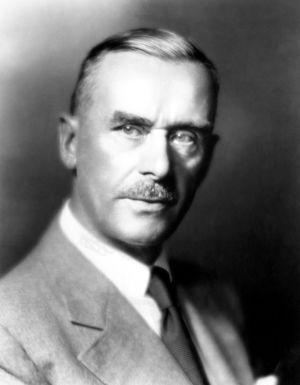Thomas Mann

Thomas Mann (1875 – 1955) was a famous German author and recipient of the Nobel Prize in Literature, best known for The Magic Mountain, Doctor Faustus, and Death in Venice. The latter novel was inspired by Mann’s own attraction to a 10-year-old male, Wladyslaw Moes[1], with famous MAP composer Benjamin Britten's final play (1973) being an adaptation of the novel.
Mann’s wife explained[2]:
All the details of the story, beginning with the man at the cemetery, are taken from experience … In the dining-room, on the very first day, we saw the Polish family, which looked exactly the way my husband described them: the girls were dressed rather stiffly and severely, and the very charming, beautiful boy of about 13 was wearing a sailor suit with an open collar and very pretty lacings. He caught my husband’s attention immediately. This boy was tremendously attractive, and my husband was always watching him with his companions on the beach. He didn’t pursue him through all of Venice — that he didn’t do — but the boy did fascinate him, and he thought of him often.
Mann’s diary records his attraction to his 13-year-old son, “Eissi” — Klaus Mann[3]:
Klaus to whom recently I feel very drawn. . . .” (June 22). In the background “conversations about man-to-man eroticism take place; a long letter is written to Carl Maria Weber on this topic, while the diary reveals: “In love with Klaus during these days” (June 5). “Eissi, who enchants me right now” (July 11). “Delight over Eissi, who in his bath is terribly handsome. Find it very natural that I am in love with my son. . . . Eissi lay reading in bed with his brown torsoe naked, which disconcerted me” (July 25). […] “I heard noise in the boys’ room and surprised Eissi completely naked in front of Golo’s bed acting foolish. Strong impression of his premasculine, gleaming body. Disquiet” (October 17, 1920).